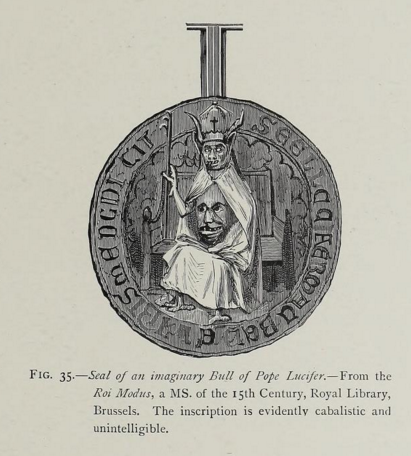~Excerpts from A History of Mourning~
by Richard Davey, ca. 1850

“Important personages in olden times in this country were usually embalmed. The poor, on the contrary, were rarely furnished even with a decent coffin, but were carried to the grave in a hired one, which, in villages, often did duty for many successive years. Once the brief service was said, the pauper’s body, in its winding-sheet, was placed reverently enough in the earth, and covered up- fact which doubtless accounts for the numerous village legends of ghosts wandering about in winding-sheets.”

Another curious custom, which is now obsolete, was to put cloves, spikenard, fine herbs, and twigs of various aromatic shrubs into the coffin, in memory of the embalming of our Lord.”

The funeral of a Pope is attended by many curious ceremonies, not the least remarkable of which is, that so soon as His Holiness’ death is thoroughly assured, the eldest Cardinal goes up to the body, and strikes it three times gently on the breast, saying in Latin, as he does so, ‘The Holy Father has passed away.'”

Perhaps the strangest funeral recorded in modern history was that of the translation of the remains of Voltaire, popularly known as his ‘apotheosis…’
In Voltaire’s lifetime it was boasted that he had buried the priests and the Christian religion, but now the priests were going to bury him, having very little of Christian religion left amongst them.”

The following are the accepted reasons for the selection of various colours for mourning in different parts of the world: –
Black expresses the privation of light and joy, the midnight gloom of sorrow for the loss sustained. It is the prevailing colour of mourning in Europe, and it was also the colour selected in ancient Greece and in the Roman Empire.
Black and white striped expresses sorrow and hope, and is the mourning of the South Sea Islanders.
Greyish brown – the colour of the earth, to which the dead return. It is the colour of mourning in Ethiopia and Abyssinia.
Pale brown – the colour of withered leaves – is the mourning of Persia.
Sky-blue expresses the assured hope thta the deceased is gone to heaven, and is the colour of mourning in Syria, Cappadocia, and Armenia.
Deep-blue in Bokhara is the colour of mourning; whilst the Romans in the days of the Republic also wore very dark blue for mourning.
Purple and violet – to express royalty, ‘Kings and priests of God.’ It is the colour of mourning of Cardinals and of the Kings of France. The colour of mourning in Turkey is violet.
White – emblem of ‘white-handed hope.’ The colour of mourning in China. The ladies of ancient Rome and Sparta sometimes wore white mourning, which was also the colour for mourning in Spain until 1498. In England it is still customary, in several of the provinces, to wear white silk hat-bands for the unmarried.
Yellow – the scar and yellow leaf. The colour of mourning in Egypt and Burmah. In Brittany widos’ caps among the peasants are yellow. Anne Bolyn wore yellow mourning for Catherine of Arragon, but as a sign of joy.
Scarlet is also a mourning colour, and was occasionally worn by the French Kings, notably so by Louis XI.”



